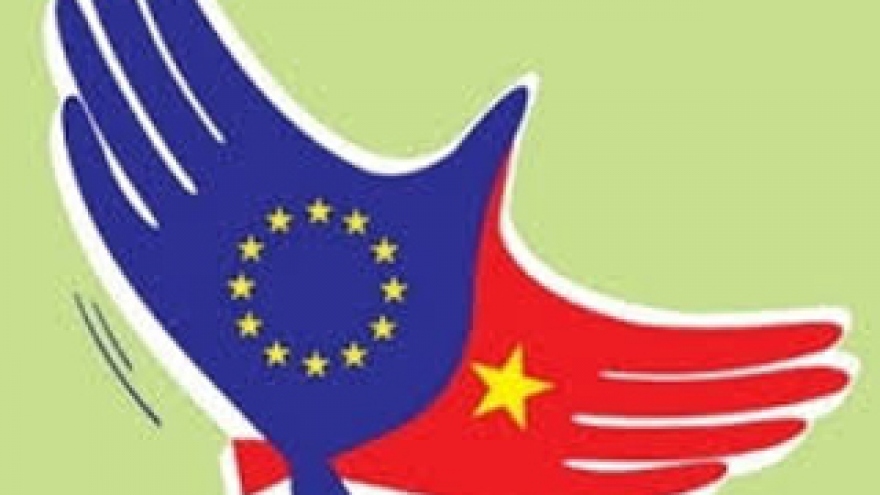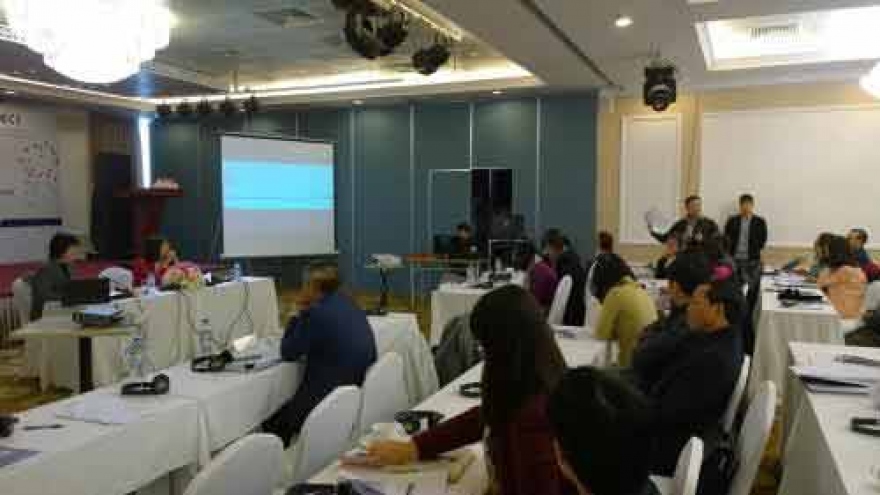EVFTA heralds higher exports
The EU-Vietnam Free Trade Agreement, which will be signed in the near future, is expected to bring about huge benefits for Vietnam’s private sector.
Expert Tong Thi Minh Phuong, and technical assistant for the European Trade Policy and Investment Support Project, Claudio Dordi, explain the likely impacts of the deal.
The benefits of the EU-Vietnam Free Trade Agreement (EVFTA) will include the progressive elimination of tariffs, as well as the implementation in Vietnam of certain domestic reforms necessary to comply with the required commitments.
The general impact of the EVFTA for Vietnamese businesses, according to an EU-MUTRAP study, is largely positive, gross domestic product (GDP) is expected to increase by 7% to 8% cumulatively up to 2025, exports to the EU will increase by 50%, and imports will rise 43%.
The EU has committed to eliminating its tariffs on all trade with Vietnam over a seven-year period, which will provide more opportunities for traditional Vietnamese exports, such as textiles and garments, footwear and seafood.
All FTAs, however, grant preferential tariffs only to products genuinely originating from members, to avoid assisting products and components manufactured in non-member states.
This may be a challenge for Vietnamese manufacturers, as many Vietnamese exports are produced from imported raw materials, particularly in the local garment sector. Origin rules in the EVFTA require Vietnamese products to be made from originating fabrics, meaning that the garments that are currently produced with imported fabrics will not qualify for preferential treatment.
Another challenge that could affect the ability of Vietnamese producers to increase their exports to the EU is related to their ability to attract the interest of EU consumer. The EU is the second-largest export market for Vietnamese products (after the US), but EU consumers hardly know, for example, that they are wearing Vietnamese-manufactured apparel or footwear.
 |
However, improving the quality of the products and their compliance with EU sanitary and technical standards is not sufficient, it is also important to raise awareness among EU consumers about any improvements.
All of these actions require multiple steps to increase the knowledge and capacity of producers to adopt sustainable procedures, improve the quality and safety management in both private and public Vietnamese enterprises, and organize campaigns for the promotion of Vietnamese brands. Moreover, these types of actions also require a substantial change in current patterns of trade in several sectors in Vietnam.
In the food sector, for example, the typical practice of selling raw products to middlemen or directly to importers does not allow any possibilities for quality control or promoting exports through marketing campaigns.
Similarly, in footwear and textiles, current policies in industrial production (or the leasing of factories) completely excludes the possibility of creating Vietnamese brands that might become recognizable to EU consumers.
In these cases, downstream expansions of the value chain are necessary, for example, expansions in food processing, export control, and control of distribution channels would aid Vietnamese exports to Europe. Furthermore, because the amount of imported materials in exported Vietnamese products is relatively high, it would be necessary to improve quality and safety controls of imports, requiring investments in infrastructure to enhance the capacity of relevant public agencies.
The opening of the Vietnamese market to the import of EU products and services, which are often listed among the best in the world in terms of quality and technological value, is a great opportunity to improve the quality of manufactured goods here in Vietnam. This is a win-win solution, as Vietnam has committed to fully liberalize almost all imports of machinery and appliances from the EU over the next five years.
The opening of procurement to the government and government agencies after a transitory period will allow EU suppliers to compete on an even playing field with Vietnamese companies in providing goods and services to the public sector.
Identifying the most profitable sectors for EU Investors
EU duties will be eliminated over a seven-year period. This is a far-reaching, fully symmetrical tariff elimination that has never before been achieved with a developing country. However, the agreement provides adequate transition periods that give Vietnam the time to adapt. Here are a few concrete examples:
-Almost all EU exports of machinery and appliances will be fully liberalized at entry into force, with any remaining items liberalized after five years.
-Motorcycles with engines larger than 150cc will be liberalized after seven years, and cars after 10 years, except those with large engines (>3000cc for petrol, >2500cc for diesel), which will be liberalized one year earlier.
-Car parts will be duty free after seven years. Roughly half of EU pharmaceutical exports will be duty free at entry into force, with the remainder becoming duty free after seven years.
-All EU textile fabric exports will be liberalized at entry into force.
-Close to 70% of EU chemical exports will be duty free at entry into force, and the rest after three, five, and seven years.
-Vietnam will also open its market for most EU food products, both primary and processed, allowing the EU’s high-quality exports to reach its growing middle class consumers. Wines and spirits will be liberalized after seven years. Frozen pork meat will also be duty free after seven years, beef after three years, dairy products after a maximum of five years, and prepared food after a maximum of seven years. Chicken will be fully liberalized after ten years.
Vietnam has committed to substantially improving access for EU companies to reach a broad range of service sectors, including business services, environmental services, postal and courier services, banking, insurance, and maritime transport.
Vietnam’s commitments
Vietnam will liberalize 65% of import duties on EU exports to Vietnam at entry into force, with the remainder of duties gradually being eliminated over a ten-year period.
The EU-MUTRAP impact assessment study estimates that Vietnam is projected to grow significantly as a result of inflows of capital and ongoing productivity improvements. The FTA is estimated to generate an additional 7-8% of GDP above the trend growth rate through 2025 (cumulatively). Depending on different potential scenarios, Vietnam’s exports to the EU are estimated to increase from 50 to 93% over the next five years, while EU exports to Vietnam are expected to hover around 43%.
However, it should be noted that as many tariff reductions will likely be implemented in 2025, a further boost to economic growth is expected in the five years after 2020.
The sectors expected to benefit the most from the EVFTA are textiles, clothing, and footwear (TFC), and food products. TFC comprises 30% of Vietnam’s merchandise exports, but 50% of Vietnam’s exports to the EU. The export products expected to benefit the most from the EVFTA are shrimp and catfish, Vietnam has a virtual monopoly on exports of catfish, accounting for 99% of world trade.
Vietnamese TFC exports to the EU are expected to more than double in 2020 following the FTA. The increase of exports to the EU may be in part of redirection of exports to other countries, as the FTA will make it more convenient to export to the EU first. In fact, the outputs of all sectors will likely increase (for example, leather exports will go up 35% and garments will go up 25%).
However, in order for Vietnam to gain more from signing the agreement, it is necessary for local companies to study EU regulations, comply with new foreign rules, improve the quality of goods and services, and expand the ends of their value chains.


